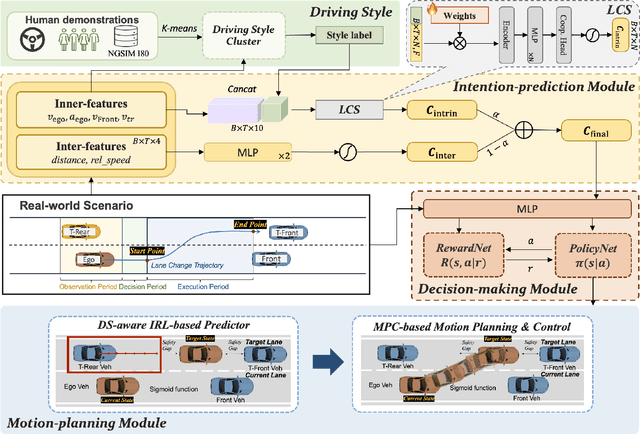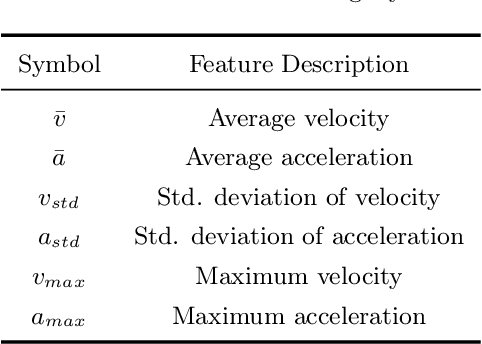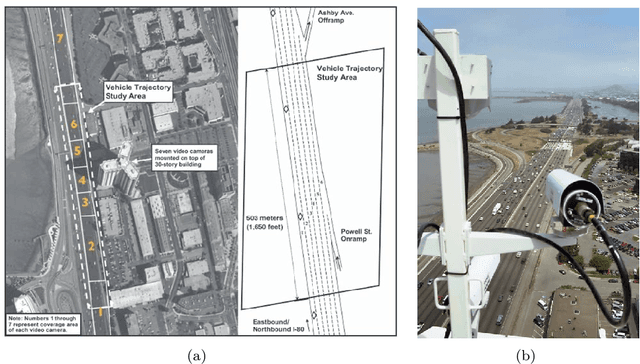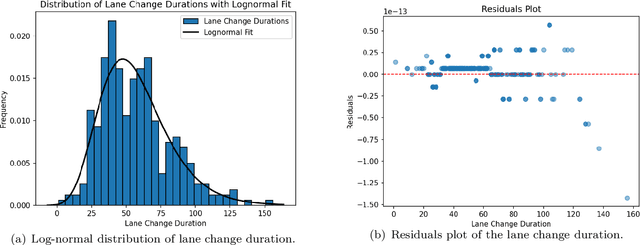Xiaoyun Qiu
An Intention-driven Lane Change Framework Considering Heterogeneous Dynamic Cooperation in Mixed-traffic Environment
Sep 26, 2025



Abstract:In mixed-traffic environments, where autonomous vehicles (AVs) interact with diverse human-driven vehicles (HVs), unpredictable intentions and heterogeneous behaviors make safe and efficient lane change maneuvers highly challenging. Existing methods often oversimplify these interactions by assuming uniform patterns. We propose an intention-driven lane change framework that integrates driving-style recognition, cooperation-aware decision-making, and coordinated motion planning. A deep learning classifier trained on the NGSIM dataset identifies human driving styles in real time. A cooperation score with intrinsic and interactive components estimates surrounding drivers' intentions and quantifies their willingness to cooperate with the ego vehicle. Decision-making combines behavior cloning with inverse reinforcement learning to determine whether a lane change should be initiated. For trajectory generation, model predictive control is integrated with IRL-based intention inference to produce collision-free and socially compliant maneuvers. Experiments show that the proposed model achieves 94.2\% accuracy and 94.3\% F1-score, outperforming rule-based and learning-based baselines by 4-15\% in lane change recognition. These results highlight the benefit of modeling inter-driver heterogeneity and demonstrate the potential of the framework to advance context-aware and human-like autonomous driving in complex traffic environments.
Multi-dimensional Test Design
Feb 17, 2025Abstract:How should one jointly design tests and the arrangement of agencies to administer these tests (testing procedure)? To answer this question, we analyze a model where a principal must use multiple tests to screen an agent with a multi-dimensional type, knowing that the agent can change his type at a cost. We identify a new tradeoff between setting difficult tests and using a difficult testing procedure. We compare two settings: (1) the agent only misrepresents his type (manipulation) and (2) the agent improves his actual type (investment). Examples include interviews, regulations, and data classification. We show that in the manipulation setting, stringent tests combined with an easy procedure, i.e., offering tests sequentially in a fixed order, is optimal. In contrast, in the investment setting, non-stringent tests with a difficult procedure, i.e., offering tests simultaneously, is optimal; however, under mild conditions offering them sequentially in a random order may be as good. Our results suggest that whether the agent manipulates or invests in his type determines which arrangement of agencies is optimal.
 Add to Chrome
Add to Chrome Add to Firefox
Add to Firefox Add to Edge
Add to Edge